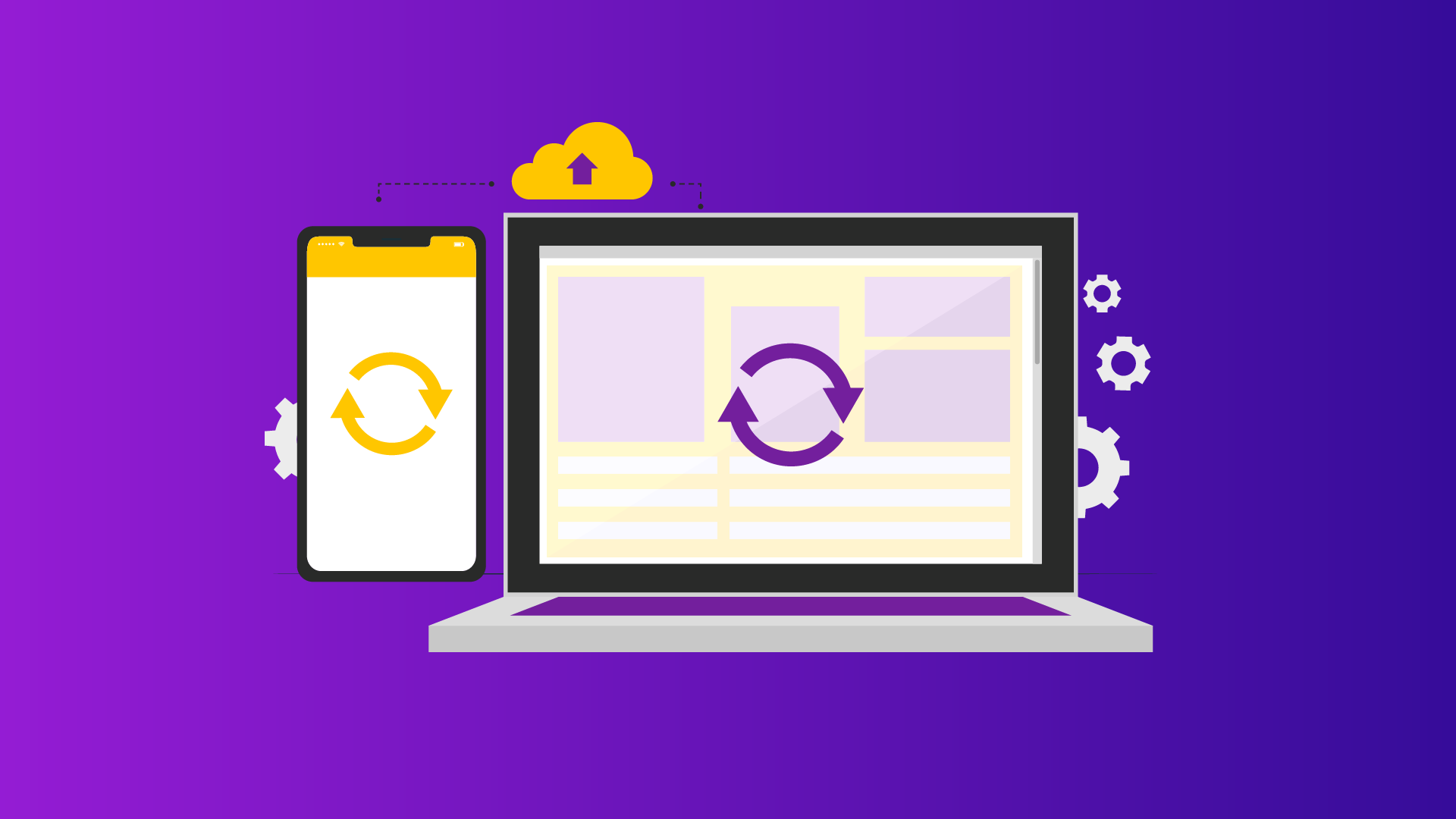Ad Refresh & How It Works
Within the dynamic world of digital publishing, content creators find themselves at a crossroads where user engagement intersects with revenue generation. Despite crafting captivating content that captivates audiences and extends their time spent on pages, publishers often struggle to fully monetize their ad inventories.
The conundrum lies in the repetition of ads, as users are repeatedly exposed to the same content, limiting the monetization potential. This dilemma serves as the catalyst for exploring the transformative concept of ad refresh, an ad tech strategy poised to elevate both user experience and revenue generation.
What is Ad Refresh?
Ad refresh is a nuanced and strategic approach within ad tech, designed to dynamically reload ad slots on a webpage after specific intervals. The primary objective is to present users with a diverse array of fresh and relevant advertisements during their visit, thereby combating ad fatigue and unlocking the untapped revenue potential. Ad refresh is a delicate orchestration that publishers undertake to strike a harmonious balance between enhancing user experience and ensuring advertisers receive optimal exposure.
How Does Ad Refresh Work?
The intricacies of ad refresh unfold through a sophisticated sequence of actions.
- User Engagement Analytics
Publishers deploy advanced analytical tools to monitor user engagement metrics comprehensively. This includes tracking metrics such as time spent on a page, content interaction, and user behavior patterns.
- Trigger Mechanisms
Ad refresh is triggered based on carefully defined conditions, which could be time-based intervals, user actions (such as scrolling or clicking), or a combination of both. This trigger mechanism ensures a timely refresh without compromising the user experience.
- Dynamic Ad Replacement
The heart of ad refresh lies in dynamically replacing existing ads with new, relevant ones. This prevents users from encountering the same ad repeatedly, fostering a sense of novelty and engagement.
- Real-time Bidding (RTB)
In some instances, real-time bidding mechanisms come into play, allowing advertisers to bid for the newly available ad slots through instantaneous auctions. This introduces an additional layer of optimization andto maximize ad revenue.
- User-Centric Experience Optimization
The overarching goal is to optimize user experience. Ad refresh is executed with precision, ensuring that users are presented with fresh and contextually relevant content without causing disruptions in their browsing journey.
What are the different forms of ad refresh?
Ad refresh manifests in diverse forms, each catering to specific publisher objectives:
- Time-Based Ad Refresh: Ads are refreshed at predetermined time intervals, providing a systematic approach to combat ad staleness and maintain user engagement.
- Event-Based Ad Refresh: Refresh occurs in response to user actions or events, such as scrolling down a page, clicking on a link, or spending a specific duration on the site. This ensures a responsive and user-centric ad serving strategy.
- Combination Strategies: Publishers often deploy hybrid strategies that combine time-based and event-based refresh approaches. This amalgamation aims to create a dynamic and adaptable ad serving mechanism that responds to both time-driven and user-triggered events.
What are the benefits of ad refresh?
User experience and engagement are paramount. Publishers find themselves at a crucial juncture—balancing user satisfaction with the imperative of maximizing revenue streams. Ad refresh emerges as a strategic beacon offering a plethora of benefits that go beyond merely preventing ad fatigue. Let’s delve into the extensive advantages that ad refresh brings to publishers:
- Maximized Revenue Streams
Ad refresh serves as a catalyst for revenue optimization. By presenting users with a continuous stream of fresh ads, publishers can maximize the monetization potential of their digital real estate. The dynamic rotation of advertisements ensures that advertisers have increased opportunities to showcase their products or services, translating into higher revenues for publishers.
- Preventing Ad Fatigue
One of the primary concerns in digital advertising is ad fatigue—users becoming disengaged or irritated due to repetitive content. Ad refresh addresses this issue head-on by regularly introducing new and relevant ads. This not only enhances the user experience but also ensures that users remain receptive to the advertising content presented to them.
- Improved Advertiser Satisfaction
Advertisers invest in digital advertising with the expectation of reaching a diverse audience and maximizing exposure. Ad refresh aligns with these objectives by providing advertisers with multiple chances to display their content to users. This increased visibility and variety lead to higher satisfaction levels among advertisers, fostering long-term partnerships.
- Optimized Inventory Utilization
Ad refresh allows publishers to make the most of their ad inventories. Instead of displaying the same ad for an extended period, publishers can showcase a variety of ads in the same space, ensuring optimal utilization of available inventory. This results in a more efficient and profitable use of digital real estate.
- Responsive User Experience
Ad refresh is not solely about revenue; it’s about striking a balance between monetization and user experience. By carefully implementing ad refresh strategies, publishers can maintain a responsive and user-centric environment. The process ensures that users are exposed to new content without disrupting their browsing experience, leading to positive interactions with the platform.
- Dynamic Campaign Optimization
With real-time bidding integrated into the ad refresh mechanism, publishers can optimize ad campaigns dynamically. Advertisers can bid for newly available ad slots, enabling a more competitive and agile advertising ecosystem. This real-time optimization contributes to the overall effectiveness of advertising campaigns.
- Enhanced Data Insights
Ad refresh provides publishers with valuable data insights into user behavior, preferences, and engagement patterns. Analyzing this data combined with Google Analytics 4 data allows publishers to fine-tune their content and ad strategies, creating a more personalized and effective user experience. It also empowers publishers to make informed decisions for future content and ad placements.
- Strategic Flexibility
Ad refresh strategies are highly adaptable. Publishers can tailor their approach based on specific goals, whether focusing on time-based refresh, event-based triggers, or a combination of both. This strategic flexibility allows publishers to align their ad strategies with evolving market trends and user expectations.
How to implement ad refresh?
Implementing ad refresh demands a strategic approach, utilizing the right tools and technologies to strike a delicate balance between user experience and revenue optimization. Here’s a comprehensive guide to the tools and platforms you need to effectively implement ad refresh.
- AndBeyond.Media
AndBeyond.Media, a leading SSP platform with Smart Ad Refresh as its standout programmatic solution. Tailored for publishers, the platform offers end-to-end implementation, providing a seamless experience.
Beyond Smart Ad Refresh, AndBeyond.Media presents a suite of solutions aimed at maximizing revenue and unlocking the full potential of content. This comprehensive approach positions AndBeyond.Media as a strategic partner for publishers navigating the dynamic landscape of digital advertising.
- Ad Server Capabilities
Leverage an ad server equipped with robust ad refresh capabilities. Major players like Google Ad Manager, AdMob, and OpenX provide features allowing publishers to easily configure and manage ad refresh settings. These platforms offer user-friendly interfaces for setting up time-based or event-based ad refresh policies.
- Incorporate Header Bidding
Embrace header bidding, a technique enabling publishers to present ad inventory to multiple ad exchanges simultaneously before making calls to their ad servers. Integrating header bidding into the ad refresh strategy enhances competition among advertisers, potentially boosting revenue. Open-source solutions like Prebid.js offer customizable header bidding options.
- Real-Time Bidding (RTB) Platforms
Integrate with real-time bidding platforms for dynamic ad replacement. RTB facilitates advertisers bidding for ad slots in real-time auctions, ensuring the highest bidder secures the opportunity to display their ad. Platforms such as Google Ad Manager, AppNexus, or Rubicon Project offer RTB solutions complementing ad refresh strategies.
- Ad Exchange Partnerships
Collaborate with ad exchanges supporting ad refresh functionalities. Some ad exchange platforms provide tools enabling publishers to seamlessly set up and manage ad refresh campaigns. Consider partnerships with platforms like Google Ad Manager, Index Exchange, or PubMatic to access the infrastructure needed for effective ad refresh.
- Ad Management Platforms
Explore ad management platforms specializing in optimizing ad delivery. Platforms like AdPlugg, Revive Adserver, AdButler, and Google Ad Manager come equipped with advanced features for ad rotation, pacing, and frequency capping, supporting the implementation of ad refresh strategies.
- Work with Ad Networks
Engage with ad networks, especially those focused on programmatic advertising, that offer solutions for ad refresh. Networks such as AdSense by Google, Media.net, and others may provide options and support for implementing ad refresh within their ecosystems.
- Third-Party Solutions
Consider third-party solutions dedicated to ad refresh technologies. Companies like Adzerk and Yieldmo offer standalone tools or services that can seamlessly integrate into existing ad tech infrastructure. These solutions often provide additional customization options and valuable insights.
What is the best strategy to utilize ad refresh?
Implementing ad refresh for publishers involves a thoughtful strategy to balance revenue generation and user experience. Here are some best practices to consider:
- Frequency Capping
Set frequency caps to control the number of times an ad refreshes for a single user during a session. This prevents overexposure and potential irritation, ensuring a positive user experience.
- Optimal Time Intervals
Determine appropriate time intervals for ad refresh based on your content and user behavior. Too frequent refreshes might annoy users, while too infrequent ones might not maximize revenue potential. Strike a balance and consider testing different intervals.
- Event-Based Triggers
Implement event-based triggers for ad refresh. This could include actions like scrolling, clicking, or spending a certain amount of time on the page. These triggers make ad refresh more responsive to user engagement, enhancing the relevance of displayed ads.
- Combination Strategies
Explore a combination of time-based and event-based strategies. This dynamic approach ensures that ad refresh is not solely dependent on fixed intervals but also responds to user interactions, creating a more adaptive and user-friendly experience.
- Responsive Design
Ensure that your website or app has a responsive design to accommodate ad refresh without causing disruptions. Make sure that your sites are mobile-friendly. Ads should seamlessly fit into the layout, maintaining a cohesive and engaging user interface and devices .
- Ad Creative Variety
Work closely with advertisers to ensure a diverse range of ad creatives. Ad refresh is most effective when users are presented with different and relevant content. Encourage advertisers to provide a variety of creatives for rotation.
- Real-Time Bidding (RTB) Integration
Integrate with RTB platforms to leverage real-time bidding for newly available ad slots. This ensures that advertisers have the opportunity to bid on refreshed ad inventory, maximizing revenue potential.
- Monitor User Engagement Metrics
Regularly monitor user engagement metrics to understand how ad refresh impacts user behavior. Analyze metrics such as time spent on the page, bounce rates, and click-through rates to fine-tune your ad refresh strategy.
- Compliance with Industry Standards
Adhere to industry standards and regulations regarding ad refresh. Implement frequency capping in line with industry guidelines to avoid potential issues and maintain a positive relationship with users.
- A/B Testing
Conduct A/B testing to assess the impact of different ad refresh strategies. Test variations in time intervals, triggers, and other parameters to identify the most effective approach for your specific audience and content.
- Data Analysis and Optimization
Regularly analyze performance data and optimize your ad refresh strategy based on insights gained. Continuous refinement ensures that your strategy aligns with evolving user behavior and market trends.
Ad refresh, with its ability to prevent ad fatigue and present users with a continuous stream of fresh, relevant content, stands as a crucial tool in the publisher’s toolkit. The benefits are multifold, from maximizing ad inventory utilization to keeping users engaged and advertisers satisfied. This strategy not only ensures a consistent revenue flow but also fosters a dynamic and responsive advertising ecosystem.
The importance of adaptability cannot be overstated. As user behavior evolves and market trends shift, publishers must closely monitor performance metrics, remaining agile in making data-driven adjustments. This commitment to optimization ensures that ad refresh continues to be a valuable asset, evolving in tandem with the ever-changing digital landscape.




Leave a Reply